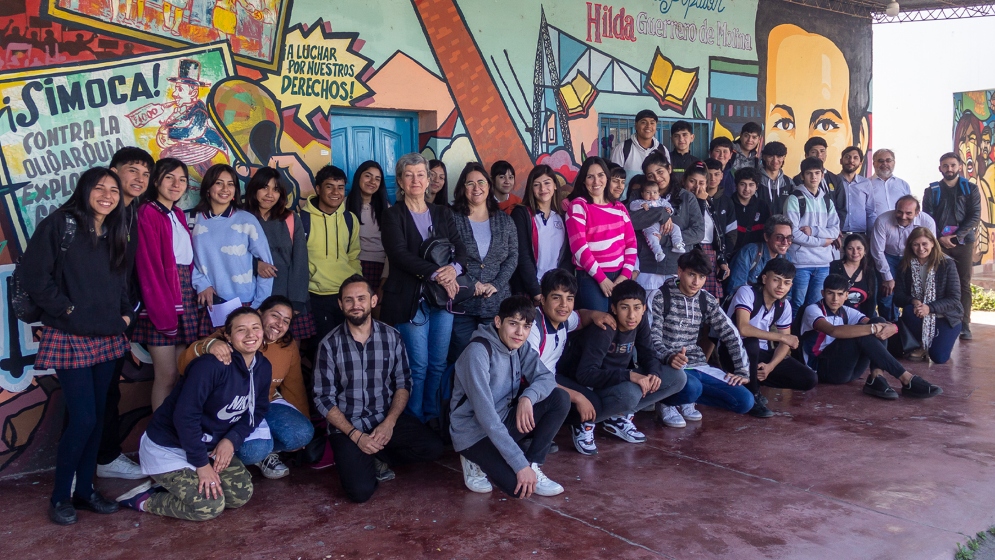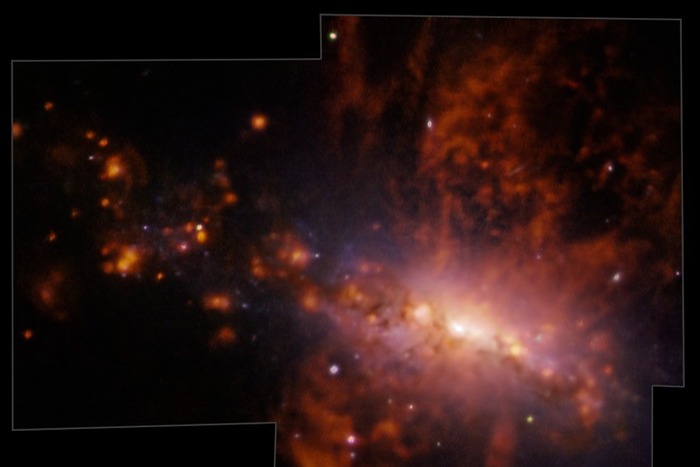This time in Tucuman, science and human rights are once again intertwined under the “Eureka ¡Re!” initiative. Questions for Science”, a cycle of meetings organized by the National Council of Scientific and Technical Research (CONICET) and the National Genetic Data Bank (BNDG). Purpose: To introduce secondary school students to the contributions that science makes in response to social demands; as in this case the contribution of archeology to identity.
To watch the activity video: click here
After this dynamic, and in the tone of a “press conference,” high school students from the Ricardo Rojas College of Commerce had the opportunity to conduct interviews. Ezequiel del Bell, archaeologist and postdoctoral fellow at the Institute for Regional and Technological Research of Habitat Production (INTEPH, CONICET-UNT); He is also a specialist on this topic, as he investigates various indicators related to the enforced disappearance of people as a result of military actions during the last dictatorship (1976-1983). Dale Bell described some of his experience. Which began more than twenty years ago through excavations and archaeological studies in various areas that served as illegal centers.
The INTEPH grantee explained that his work is sometimes complex, since he has different bureaucratic obstacles to overcome, but at the same time it is exciting and encouraging to be another link that contributes to the “recovery of identity”. He also highlighted “science that takes place outside laboratories” because in such cases it is an essential ally that allows us to shed light on the crimes committed in those times.
Likewise, he considers these types of conversations, in educational settings and with young people in training, essential: “They take home a lot of information about our recent history; About what the violation of human rights was at that stage, and about the importance of the struggle for memory, truth and justice. “All aspects that help to know and respect their rights, so that we can certainly look forward to ‘never again’ in our country.”
The youth group’s curiosity emerged through reflective consultations, for Marta Rondoletto, a journalist and human rights activist who lost five immediate family members – her father and mother, two brothers and a nephew – who were murdered. His remains were found in Pozo de Vargas, another enforced disappearance point in the province – which in this case was used as a burial cemetery.
The answers didn’t take long to arrive. And they were strong: “I seek justice, not revenge,” said Rondoletto, after revealing his tragic life story and what he had to go through in that period of deprivation. In excerpts from her speech, based on memories and experiences of struggle, she said that she was forced to leave the governorate in 1978 and then the country because she was also being persecuted by army factions. “I returned in 1983, and from there I devoted myself to journalistic practice, investigation and trying to ensure that trials were carried out,” said one of the voices demanding justice in the Arsenales-Gvatura 2 case. From this standpoint, he stressed the importance of “testimonies” as a spearhead for discovering these secret sites, and intervened. Later they specialized in the scientific field.
On the other hand, he called on young people to defend democracy and enjoy responsible freedom: “a freedom that many of us could not have enjoyed at your age,” referring to that period that was marked by a series of various coups and coups d’état. Dictatorship regimes.
Famila School Tour
Once the conference ended, the students toured the facilities of what is now the Human Rights Remembrance and Promotion Space with the representatives. During that journey, they were guided by the professional staff of the former secret detention centre, which operated as such from February 1975 until the coup in March 1976.
It is important to mention that throughout that period, between 2,500 and 3,000 men and women passed through its facilities, who remained there in captivity after being persecuted for political reasons and subjected to various types of torture. All this is within the framework of the systematic plan of terrorism and extermination that began with the independence process, and which extended and deepened during the last civil-military dictatorship (1976-1983).
María Coronel – space coordinator, Gallo Ismael Briatora – librarian, guide and subject specialist – and Luis Ortiz – survivor and living witness of the Escuelita – were responsible for explaining and informing visitors about how the spaces work and are distributed. Rooms that were used at that time as cells.
As the tour progressed, Ortiz recounted the vicissitudes he had to go through during the 20 days he was kidnapped: “I heard voices, and I realized that there were many of us. “I was blindfolded and handcuffed at all times,” he said, adding that some were beaten and tortured in various ways. Its types. He added, “Despite the horror we experienced, we came here so that young people know what happened, because this cannot happen again.”
Participating in this trip and the rest of the activities were Pablo Paulaso, Director of INTEPH, Augusto Bellomeo, Director of CCT NOA Sur, and Director of Institutional Relations (DRI) of CONICET, Alejandro Dabrowski.
Eureka Re! “Questions to Science” is an activity created and managed by the Educational District of CCT CONICET-CENPAT, in coordination with Alejandro Cannizzaro, which seeks to promote the scientific profession and enthusiasm of young people for topics related to science. Dynamics of science journalism. In recent years, side by side With the Science and Identity Project – led by Gabriela Milan -, CONICET through the Directorate of Institutional Relations and the BNDG has strengthened relations to develop activity in various fields and to strengthen and consolidate its federal character, as is the case with this new cycle of meetings.
The first of these meetings was held a few weeks ago at the Scientific and Technological Pole in the Federal Capital. Following the same introductions and method, the high school students interviewed three authorities: the famous Argentine geneticist, Victor Benchazadeh, one of the founders of the Ancestry Index; To Paola Lugares, the first granddaughter to recover from this catalog and to her grandmother, Elsa Pavón, co-founder of Abuelas de Plaza de Mayo.
After meeting in Tucuman – the province where this activity was also carried out the previous day with students from the Technical Institute and the School of Fine Arts, both experimental teaching centers of UNT – the itinerary continues in Bariloche, then arrives in La Plata and continues over the coming months in other locations From the country.





